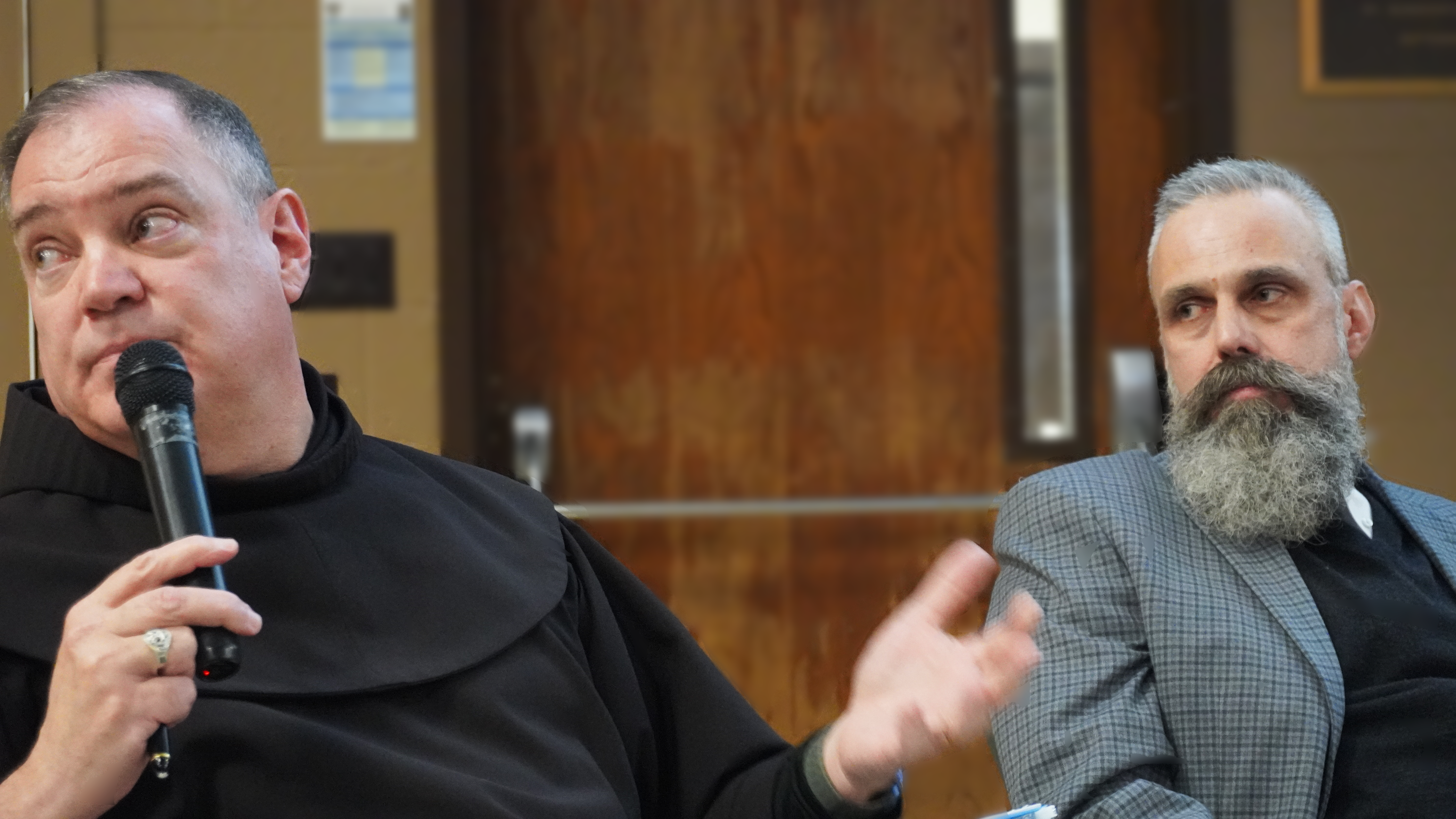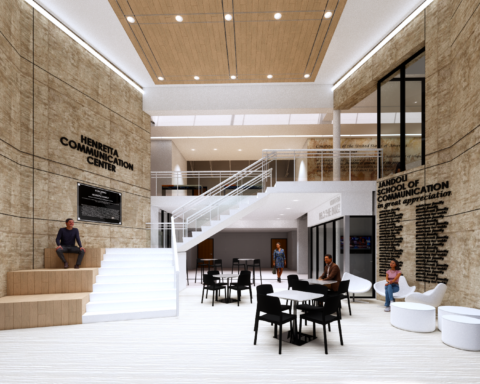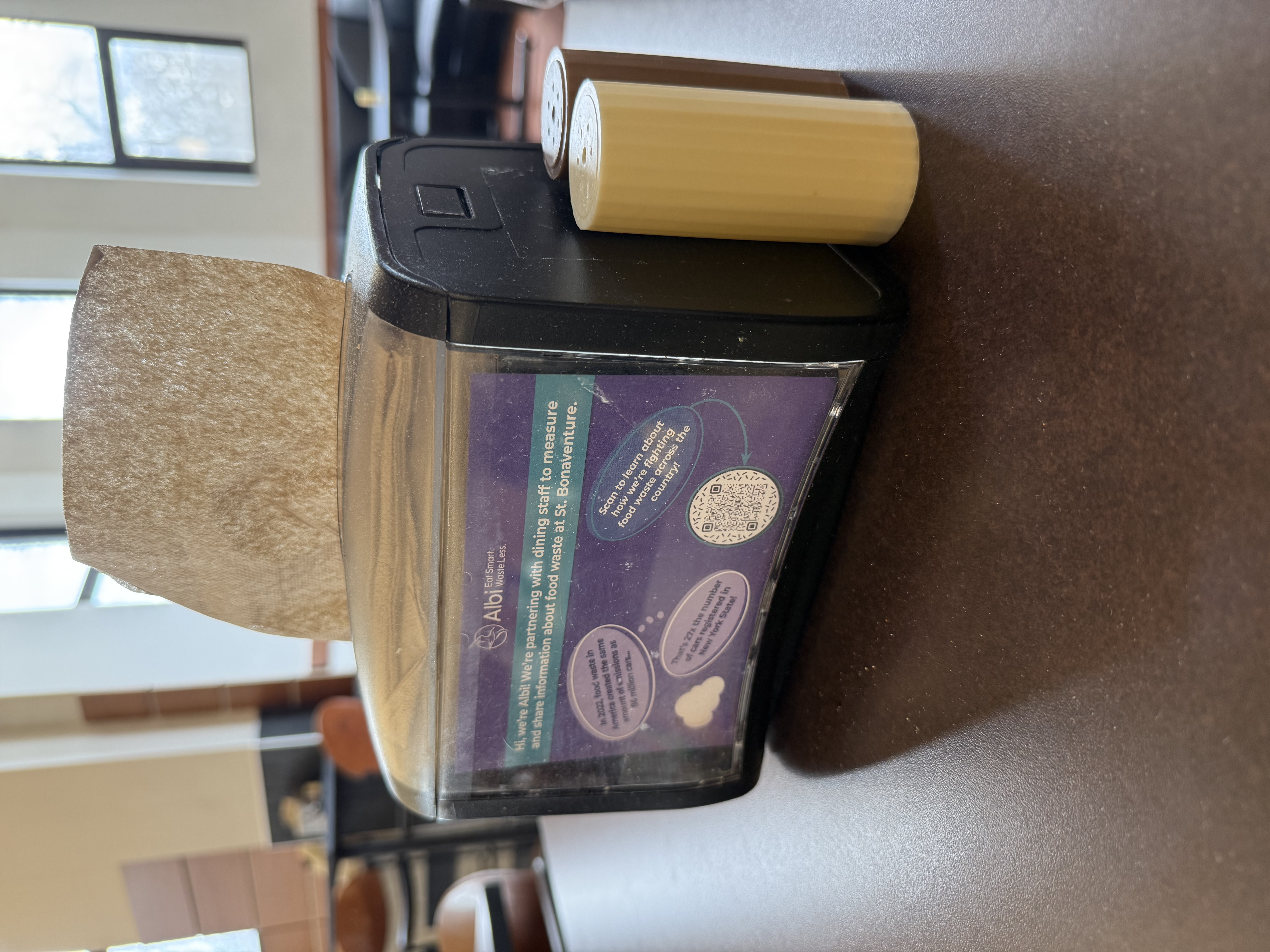The administration building
David Scibilia/The Bona Venture
BY: DAVID SCIBILIA, NEWS EDITOR
Jack Olszewski entered St. Bonaventure University as a freshman chemistry major in the fall of 2022. He transferred out after one semester.
“I felt like I didn’t quite fit in with the general student population,” Olszewski said. “Also, I realized chemistry wasn’t for me and I wanted to go into high school earth science education. Bonaventure didn’t have this as a major.”
In the 2022-2023 academic year, the Student Success and Retention Committee was created to address concerns surrounding St. Bonaventure University’s retention rate.
“The committee is still very active,” said Katie O’Brien, vice president for Student Affairs and co-chair of the committee. “We completed year one, and we’re waiting on the final, hard numbers [on retention].”
University administrators created the committee to address the dip in retention seen during the 2020-2021 academic year.
“After COVID, we saw a significant drop in retention of first-year to second-year students,” said David Hilmey, the other co-chair and provost and vice president for academic affairs. “The purpose of the committee was really to make sure that our students are retaining at the high rates that we are used to.”
In 2021, Bonaventure had a 73% retention rate from freshman to sophomore year. That was Bonaventure’s lowest retention rate in more than 20 years.
“It was an eye-opener,” said O’Brien. “There were county health guidelines and New York State guidelines of what we could have for room capacity and things like that. So we weren’t surprised it would dip, but to dip that low was an eye-opener.”
But committee members are aware that there are more reasons than COVID that affect retention rates.
“We know that there were a lot of causes that were specific to COVID,” said Hilmey. “But we also knew that these causes were more fundamental.”
One of these fundamental causes O’Brien identified was financial aid packages given to students eligible for federal student aid, like the Pell Grant..
“We got a $500,000 grant from the Mother Cabrini Foundation, which is specifically designed for Pell-eligible students,” said O’Brien. “ [They] can get an additional, small amount of scholarship money to close that financial gap [they] may have.”
Mental health was also a leading issue identified for retention by both Hilmey and O’Brien.
“We had this question of: What happens to all the students who don’t really have an academic issue — and their issue doesn’t raise the level of a threat or a concern — but they still need some guidance?” said O’Brien. “We developed a care team whose job is to provide support and check in on these students.”
Hilmey believes that ensuring support is available is an important goal of the committee.
“We have to engage more with our counseling and our health services to figure out ways of putting into place programs, opportunities and ways for students to find help,” said Hilmey. “The goal is to provide as much support for students as possible.”
Specifically targeting retention from freshman to sophomore year, SBU-101 and SBU-102 have been replaced with a new course called BONAS-101.
“We assessed [SBU-101 and SBU-102], and we determined that there were some things that worked and some things that didn’t,” said Hilmey. “We wanted to utilize the first-year course to build enthusiasm for the university, to build a sense of belonging for students, but also to give them some study skills and some academic skills.”
In the 2022-2023 school year, SBU-101 was not very standardized among instructors, said Hilmey.
“In terms of what we are teaching in classes, BONAS-101 is much more standardized [than SBU-101],” said Hilmey. “We built several modules, [including] financial literacy, career planning and mental health.”
Another issue this committee identified was the role of residence life on student retention.
“We took a really close look at students’ residential experience, and we know that 98% of our first-year students live on campus,” said O’Brien. “We implemented Bonnies’ chats, which is a new program to place emphasis on community building.”
Beyond retention rates, the committee is also focused on ensuring students are progressing through and succeeding in their major.
“We did an initiative, and we reached out to to all of the students who were not quite at the credits they should be at with a GPA of between a 2.0 and a 2.5 and worked with them to see if they were in the right major and why they were a little low on their GPA,” said O’Brien. “[Out of this group] over 90% of the students were retained.”
Ultimately, Hilmey believes that statistics are going to play an important role in the committee’s actions this year.
“There’s a lot of factors that go into [retention],” said Hilmey. “We have to look at it in totality and hope that we can pick some stuff out to fix what’s broken and tweak what might be working.”
Hilmey stressed the importance of analyzing what the committee accomplished last year before starting on new issues.
“We can’t throw anything away or start anything new until we look at what we’ve done,” said Hilmey. “We developed five areas of focus, and we’re trying to give everything we’ve got to them. We don’t want to create new initiatives and dilute what we’re trying to do.”
O’Brien recognized that students’ needs change every year, and that the committee has to be able to identify these new needs as well.
“The student experience changes every year,” said O’Brien. “We have to be able to provide what students are looking for — we can’t just look the other way. We have to change with it.”
scibild22@bonaventure.edu








